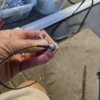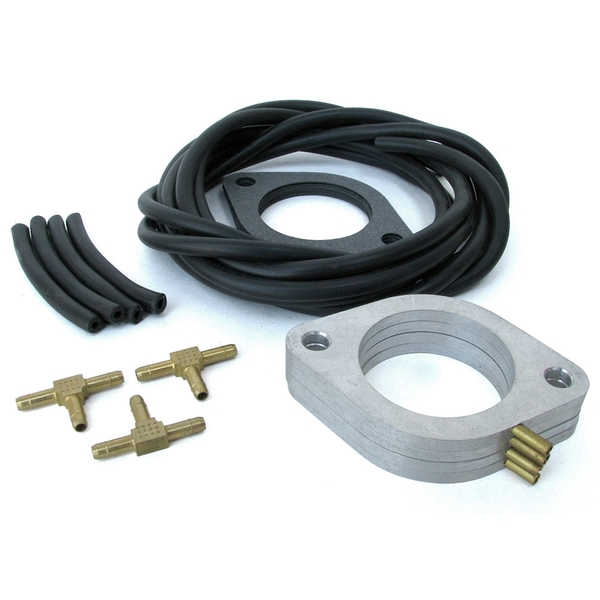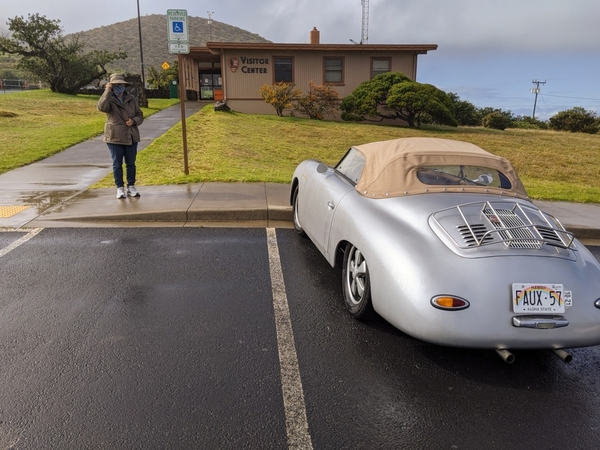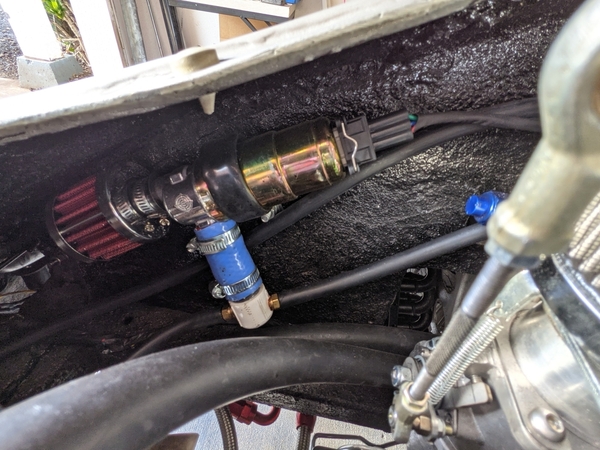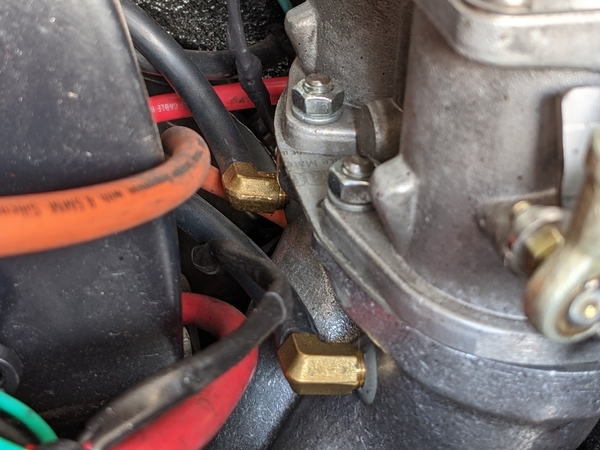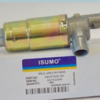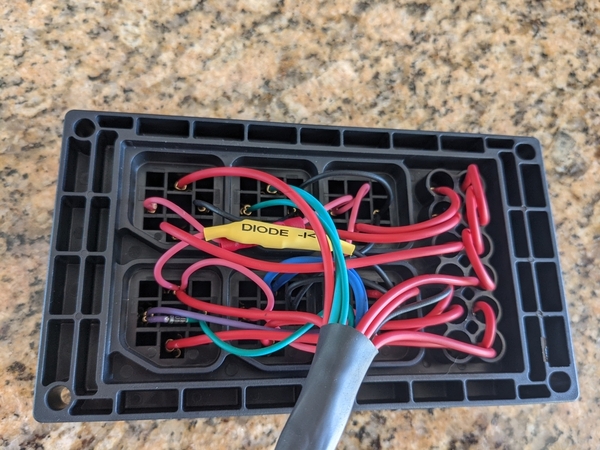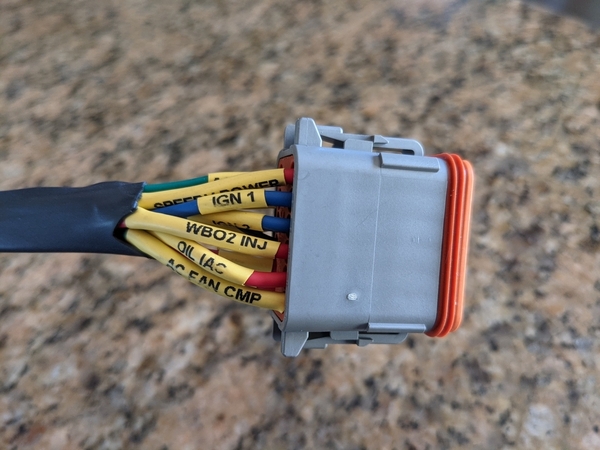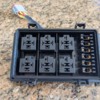More polishing the Speeduino tune. Up to now, I've been getting my engine temperature from a VDO oil temp sensor. Speeduino uses the engine temperature sensor reading to calculate how much fuel should be added to the VE map when the engine is warming up. It's a pretty simple adjustment, but oil temp lags behind cylinder head temps by quite a bit especially on air cooled engines.
I decided to get a better sensor reading to drive the warm-up calculations. It doesn't need to be instantaneous, just a bit closer to actual cylinder head temps than the oil temp.
I decided to use the same head temperature sensor used in Type 4s and 914s - a Bosch style 0 280 130 012, also known as a VW temp sensor II (TSII). I found a cheap Chinese copy on eBay and got the calibration tables off the web.
Again, it just needs to track pretty close to the head temps, so I decided to make a mount to attach it to the head using one of the front exhaust studs.
I took 3/8" copper tubing and flattened about 4" length of it. I then folded the flat part in half and drilled a couple of holes. Once it was cleaned up, I cut the flat part off. I secured the sensor to the mount with a M10 - 1.5 nut. I then bolted the sensor mount under an exhaust nut.



You've got to put the sensor calibration info into the Tunerstudio temp calibration tool. I used a bias resistance of 2490 and temp data points of:
68F - 2510 ohms
140F - 593 ohms
320F - 45 ohms
I used the Tunerstudio warm-up wizard to adjust the warm-up table to match the new sensor. It definitely warmed up a lot faster than the oil temp. It ran up to around 250F and then dropped back to 180 when the oil cooler thermostat opened. I'll be tweaking the warm-up table over the next day or so.
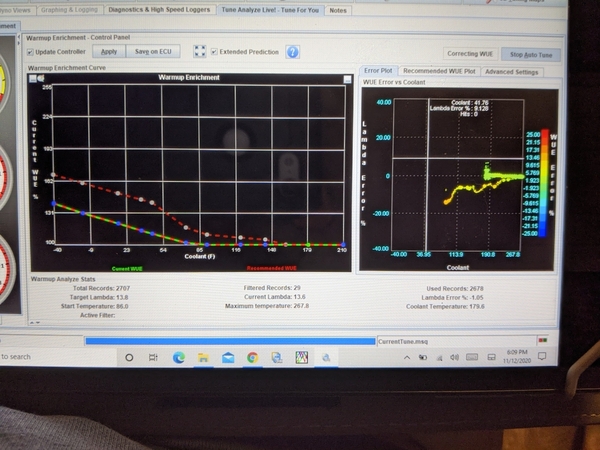
Just FYI, this gives you a nice cold start. You can get an even better one by adding an idle air control valve. For that to happen, you need to add idle port connections to the manifolds. The extra idle air can't just be connected to the same vacuum lines used for the ECU MAP sensor. I found that if I set the idle between 1000-1200 RPM I really don't need it.
Things are really smooth now. I don't really have anything big on my EFI todo list anymore. If anyone has questions, post here or shoot me a PM.















